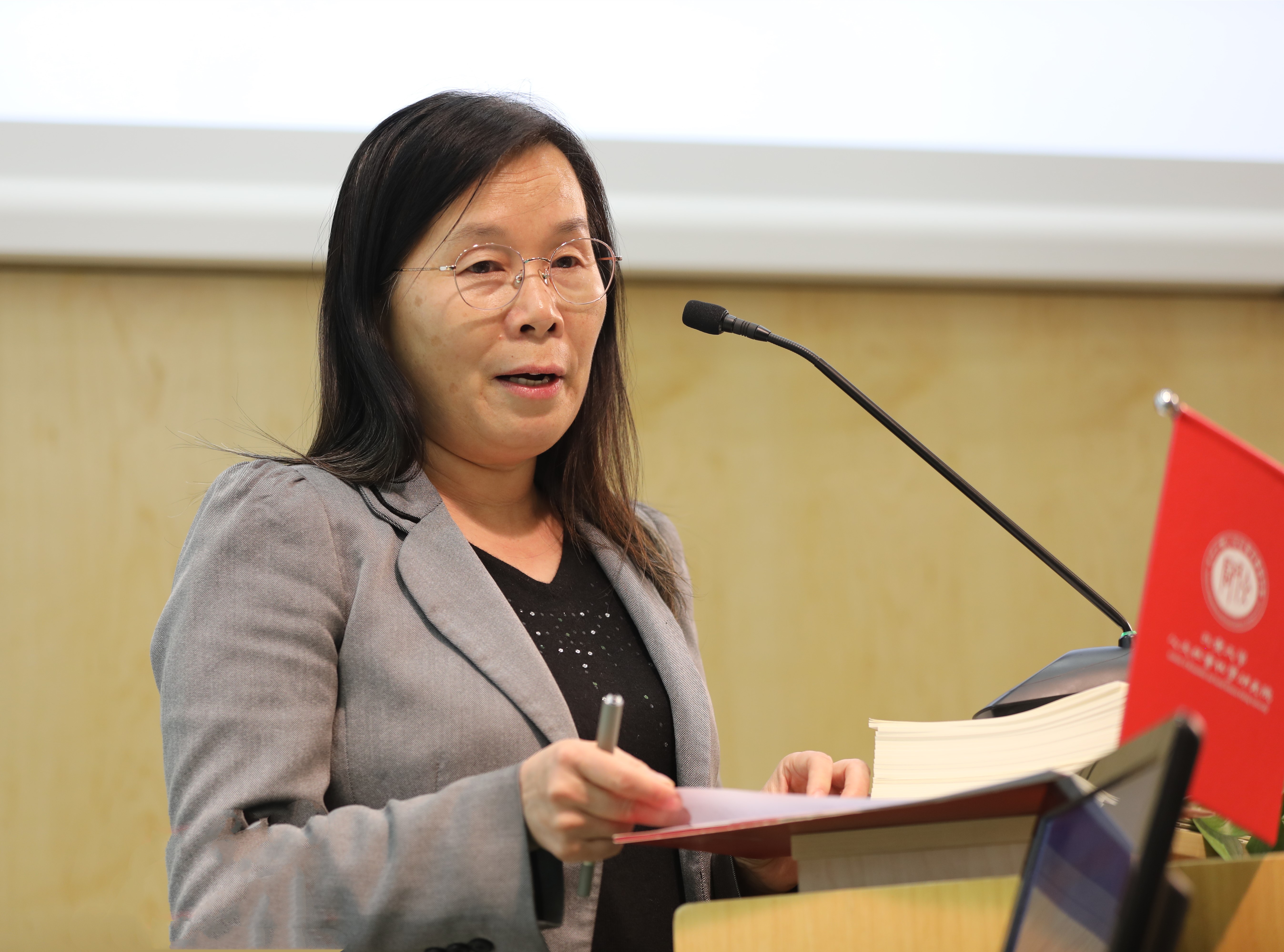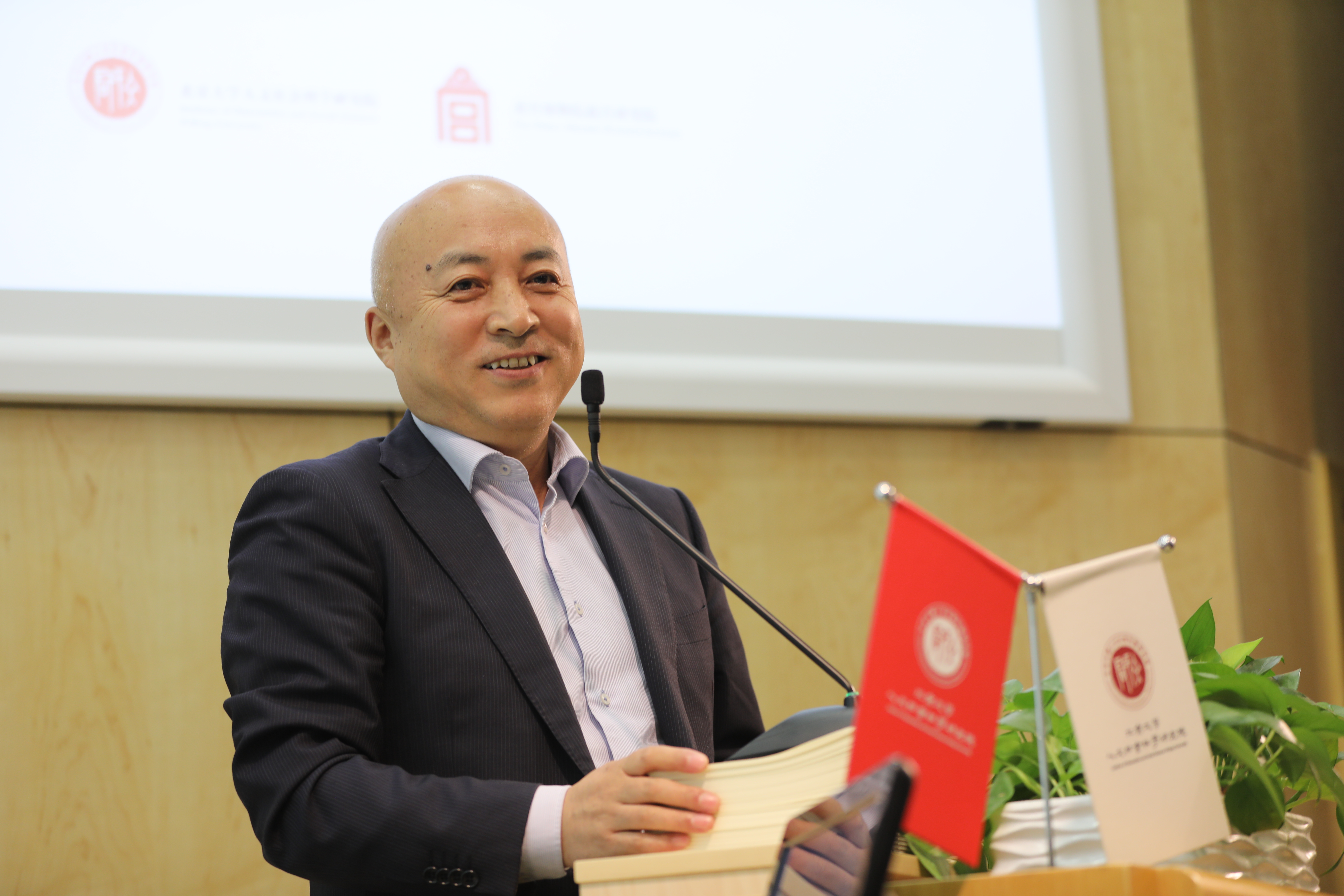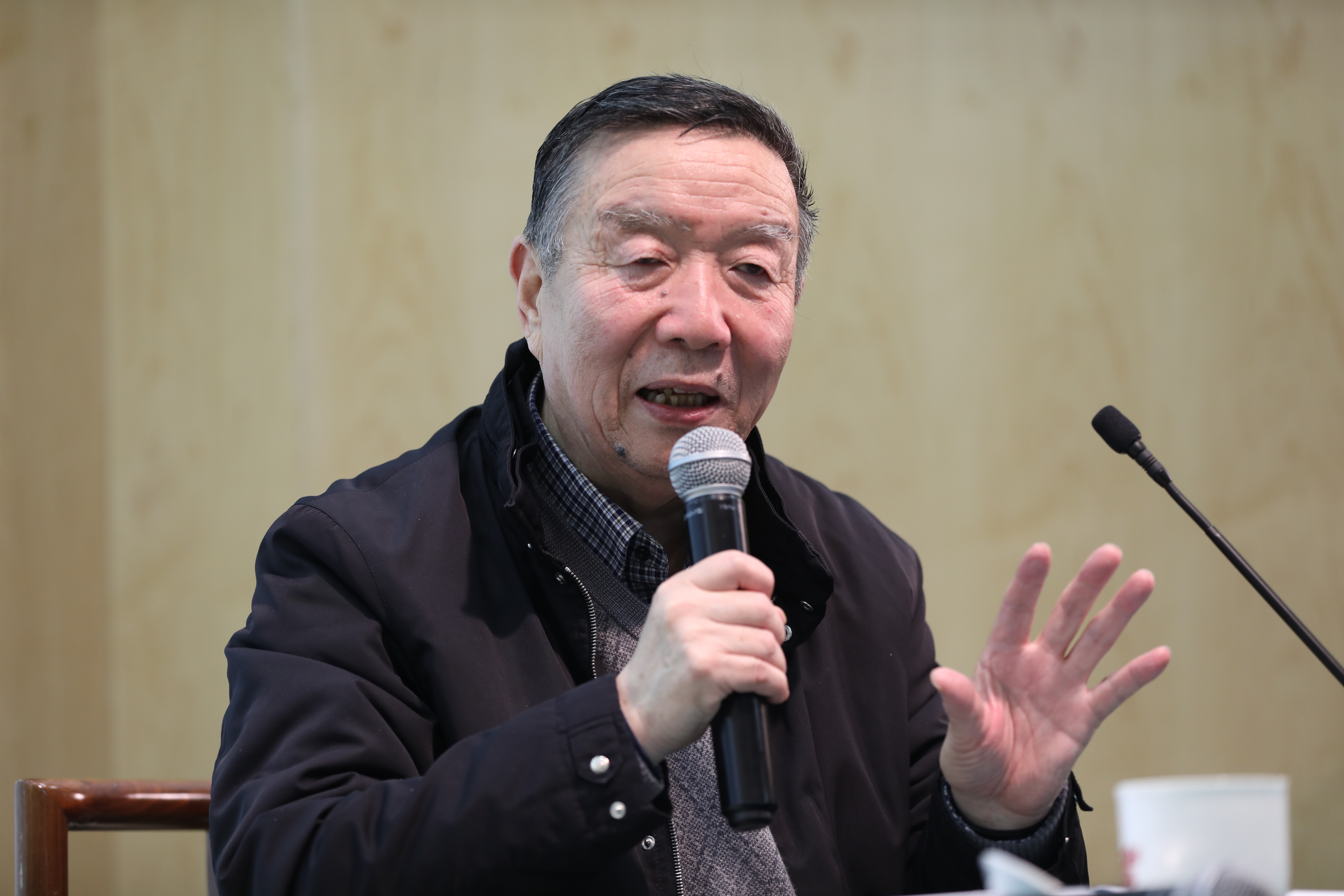"Forbidden City and Gugongnology" launched at Peking University
Dec 09, 2019
Peking University, Dec. 3, 2019: On November 29, the launching ceremony of a series of academic activities revolving around “Forbidden City and Gugongnology” was held at Peking University. The launching ceremony was hosted by Deng Xiaonan, dean of the Institute of Humanities and Social Sciences (IHSS) at Peking University. Wang Xudong, director of the Palace Museum, Zhao Guoying, deputy director of the Palace Museum, and PKU Council Vice Chair Ye Jingyi attended the ceremony, along with over 300 students and staff. The first lecture of the series was given by Zheng Xinmiao, director of the Palace Museum Research Institute, shortly after the launching ceremony.
The series of academic activities was launched by IHSS and the Palace Museum Research Institute, in accordance with a strategic collaboration agreement signed on Oct. 20 that aims to further strengthen exchanges in academic research and the training of talents.
At the launching ceremony, Ye Jingyi first delivered the speech congratulating on the launch of the academic activities and extended gratitude to the Palace Museum for its full support. The shared sense of self-consciousness and resonance between Peking University and the Palace Museum in pushing forward the development of fine tradition culture of China, she pointed out, would help implement the academic cooperation mechanism and hold great promise in future collaboration. She firmly believed that common duty and deep cultural roots would connect PKUers and Gugongers together and inspire them to make greater contributions to the development of Chinese civilization.
 Ye Jingyi
Ye Jingyi
Wang Xudong noted the irreplaceable bonds between Peking University and the Palace Museum. In the past, PKU and the Palace Museum were neighbours. Today, holding academic activities at PKU provides an opportunity to learn about traditional Chinese culture and China’s cultural heritage and eventually take Gugongnology to the new heights.
 Wang Xudong
Wang Xudong
Zheng Xinmiao’s lecture focused on “the Southward Migration of the Palace Museum’s Cultural Relics and its Significance” and gave an insight into that particular historical event. Created and accumulated by generations after generations of the Chinese nation, the cultural relics in the Palace Museum embody the wisdom and creativity of our nation, reflect the glorious history of Chinese civilization, and represent our national spirit. Suffice to say, those relics are the cultural carrier of our long history and ancient civilization. The southward migration of cultural relics from the Forbidden City was a difficult process, which is rare in the world for its long duration, wide migration area and arduous task. But the relics were preserved intact, which was a feat of human protection of cultural heritage. Since then, the cultural relics have become closely linked with the nation’s fate and our national spirit. During the whole time the Palace Museum Council played a key part in managing its resources.
 Zheng Xinmiao
Zheng Xinmiao
Since October, IHSS and the Palace Museum Research Institute have worked out multiple cooperation mechanisms to bring together both sides' academic talents and resources. In November, Li Kaiyuan, a renowned scholar on history of Qin and Han dynasties, and Professor Chen Suzhen from PKU Center for Research on Ancient Chinese History were also invited to give lectures in the series of academic activities on the Forbidden City and Gugongnology. In the future, Peking University and the Palace Museum will continue to maintain close cooperation in teaching, research and talent training. High-quality courses taught by senior experts in the Palace Museum, including Authentication and Collection of Ancient Chinese Paintings and Calligraphy, and Palace Architecture and Furnishings of Ming and Qing Dynasties will be introduced by IHSS, the Department of History and the School of Arts.
Written by: Sun Mengzhen
Edited by: Ma Yaoli
Source: PKU News (Chinese)


